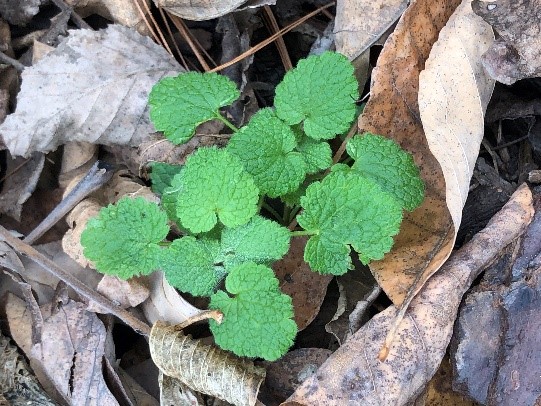Recently I noticed some of my winter-blooming hellebores (Helleborus spp.) are already adorned with flower buds, which is about a month early for my garden site. I don’t think I have ever had a “Christmas Rose” in bloom by Christmas? If Mother Nature doesn’t freeze them out, a winter bouquet may just be in my future.
Hellebores, like many of their cousins in the buttercup family, lack showy petals. Instead, it is its five colorful sepals that steal the show, masquerading as petals. If you look closely at a hellebore bloom, you will notice in the center two to ten pistils surrounded by multiple rings of up to 125 stamens. But where are the petals? Look a bit closer and you will see a ring just outside of the stamens made up of subtle petals, modified into tubular or funnel-form nectaries. In some selections, especially doubles, these nectaries are more petal-like.
I notice new hellebores every year popping up in unexpected places, well away from other hellebores and oftentimes with blooms looking unlike anything I knowingly have planted. Turns out hellebore seed has a dispersal method termed myrmecochory. Here’s how it works. Hellebore seeds have attached elaiosomes, which is a nutritious fleshy structure rich in lipids and proteins, and very attractive to ants. Foraging ants carry the seed back to their nest and the elaiosome component is eaten or fed to their larvae. After the elaiosome component is eaten from the seed, the seed is then discarded to their waste area, effectively planting it. This is also a common dispersal method for trillium, blood root, twinleaf, hepatica, Dutchman’s breeches, squirrel corn, trout lily, and some violets.
As to not breeding true, hellebores flowers are protogynous, meaning the stigmas are receptive to pollen before the anthers in the same flower sheds its pollen. This effectively makes them self-incompatible and encourages cross-pollination. This leads to a lot of natural variation in the resulting seed-grown plants, which are often referred to as strains in the nursery industry. Tissue-cultures hellebores are becoming more common, but seed-grown plants still dominate the market. This means if you were to buy five seed grown hellebores of the same strain, there is a good chance they may all be noticeably different from each other. Buy 5 tissue-cultured plants of the same cultivar or species and they will all be identical.
Sometimes what I see on my walks through the garden doesn’t elicit a warm happy feeling, but instead brings a feeling of weary acknowledgement…like seeing rosettes of purple deadnettle and other weedy winter annuals brazenly trying to establish a place in my jungle. My advice to all gardeners is to always take advantage of a halfway decent winter day to keep on top of weeding. My theory is anything I pull now is less I have to pull next spring, plus I’m not under the gun worrying about the plant going to seed now like I am in the spring. My compost pile is already topped with green from weeding purple deadnettle, henbit, common chickweed and prickly lettuce.


